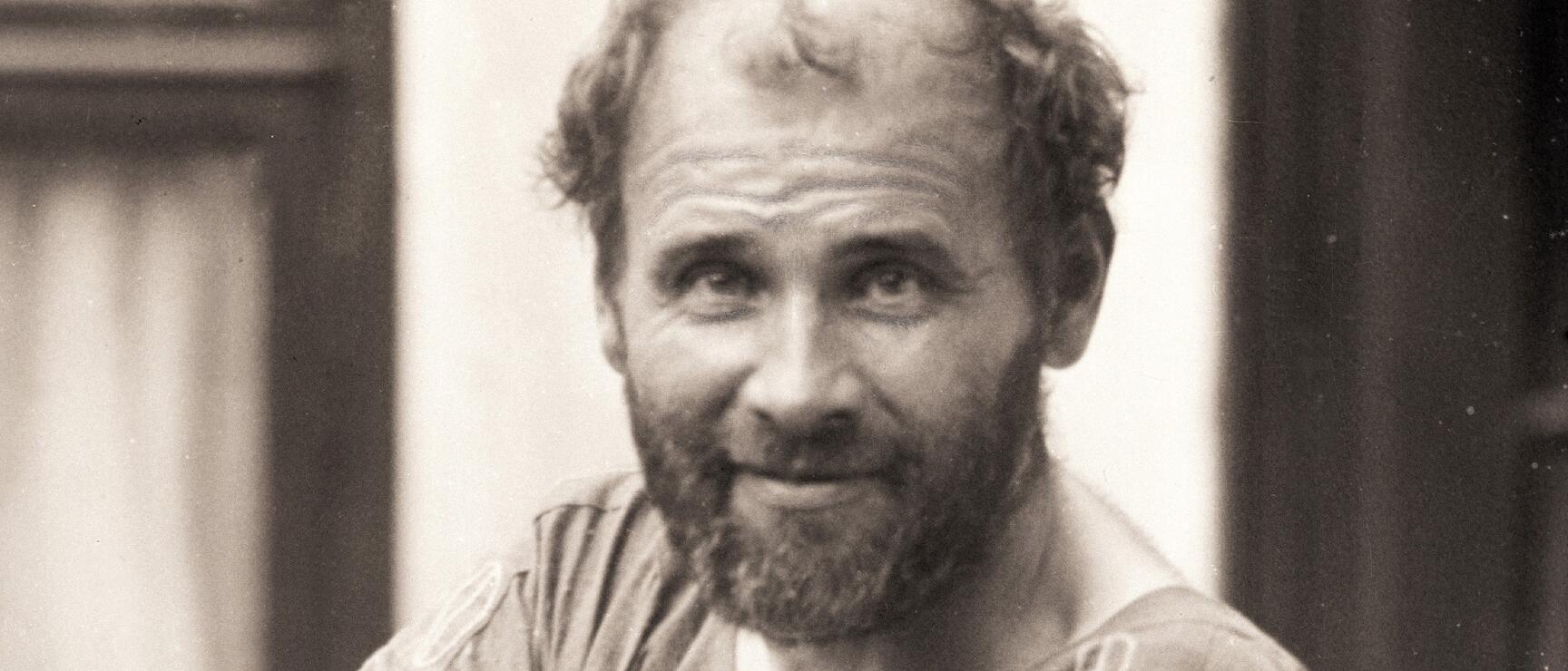
Gustav Klimt
His passion for painting, women and Lake Attersee
In addition to establishing his "Golden Period" and the famous decorative-ornamental depictions of women of the Viennese upper middle class, Klimt discovered landscape as another favorite subject of his painting.
At Attersee in the Salzkammergut, Gustav Klimt found the peace and inspiration he was looking for in his work. Impressive landscape paintings, in which his enthusiasm for the floral colourfulness of nature is evident, were created there.
Meet Gustav Klimt's works
A pioneer of Viennese Art Nouveau
Artist and personality
Gustav Klimt was born on 14 July 1862 in Baumgarten, now part of Vienna’s 14th district. He became one of Austria’s most renowned painters and the leading figure of the Viennese Art Nouveau (Jugendstil) movement.
In 1897, Klimt left the Künstlerhaus association and co-founded the Vienna Secession, serving as its first president. This was a bold challenge to the state’s rigid control over the arts.
Speculation about his many relationships with women of high society continues to this day. In his later years, Klimt became particularly drawn to the sensual power of nature, painting serene, unpopulated landscapes where time appears to stand still—visions of an earthly paradise bathed in eternal summer.
Klimt’s indulgent lifestyle is also legendary, often marked by lavish evening meals. He passed away on 6 February 1918 in Vienna.
Lover and admirer of women
“With a woman in love, you can do anything she wants.” This quote from Gustav Klimt, Austria’s most dazzling Art Nouveau painter, is as intriguing as the man himself.
Klimt had an undeniable ability to captivate, whether through his art, his unique personality, or his savoir-vivre. How the painter, clad in his iconic blue smock, managed to win over so many women remains a mystery. However, it’s easy to imagine that the rose—the queen of flowers—played a role not only in his works but also in his romantic pursuits. A timeless symbol of love and passion, the rose’s allure was surely not lost on the sensual Klimt.
Klimt both loved and revered women. Though he never married, he fathered seven children with various women. His passionate affair with his muse Emilie Flöge is well known, as are his “affaires d’amour” with the 19-year-old Alma Schindler (later Mahler-Werfel) and models like Maria Učická and Marie “Mizzi” Zimmermann. His lifelong relationship with the emancipated fashion designer Emilie Flöge was undoubtedly unique—she was, in many ways, his “soulmate”.
The muses of the painter
Lake Attersee: A source of inspiration
Countless hues and harmonious tones radiate from billions of blossoms, mingling with fragrances that range from gentle to sharp, sweet to tangy.
The Attersee’s villas, steeped in a glorious past, still bear witness to this splendour. These historic retreats were where Gustav Klimt spent his summers. The former Villas Orléans and Ransonnet are now the Villa Weiss and Grafengut hotels, while the Villa Paulick offers guided tours. The Villa Polese, a private residence, occasionally opens its doors for literary readings, keeping the area's cultural heritage alive.
Gustav Klimt and Lake Attersee
Klimt - A man of pleasure
Gustav Klimt had a passion for good food—and often indulged to excess. According to his artist colleagues, he “ate his hearty meals with visible delight, always having two to three servings of each dish. When invited to friends’ homes, two extra platters were always prepared just for Klimt.”
The artist frequently enjoyed breakfast at the Meierei Tivoli, near Schönbrunn Palace Park, where he would savour coffee, Gugelhupf, and whipped cream. For dinner, he had a particular fondness for Girardi roast beef or calf’s sweetbreads à la Tegetthoff. Today, visitors to Vienna’s restaurants and cafés can still indulge in these timeless classics and discover why Klimt, the bon vivant, held them in such high regard.